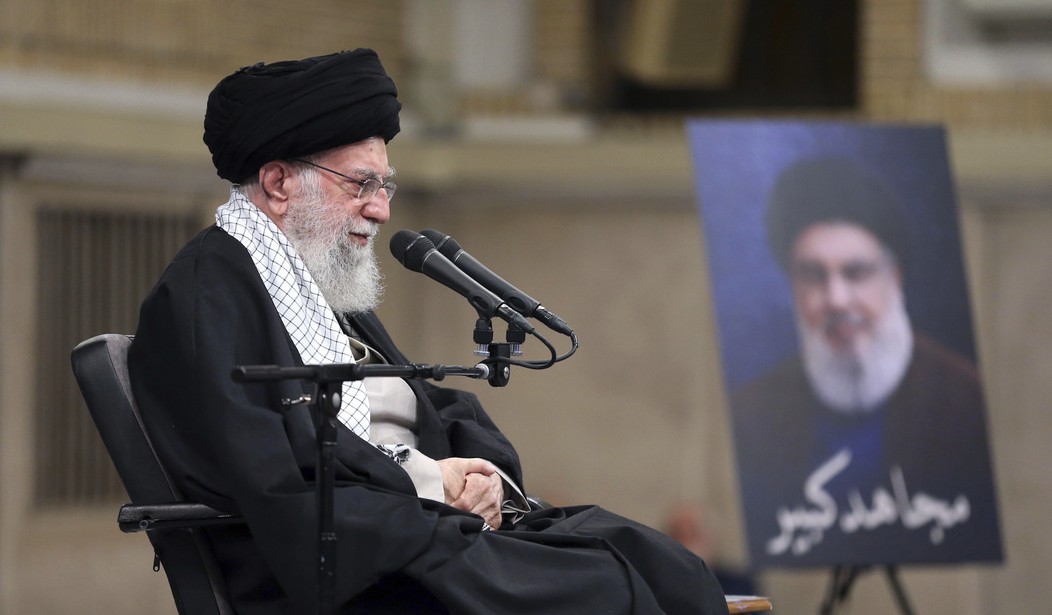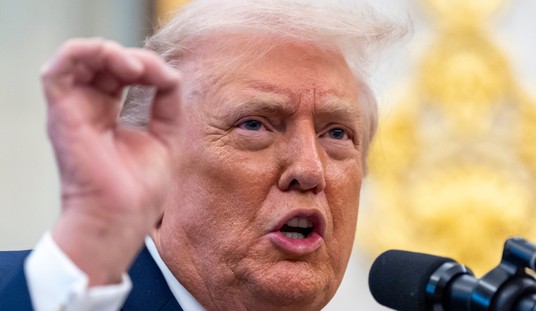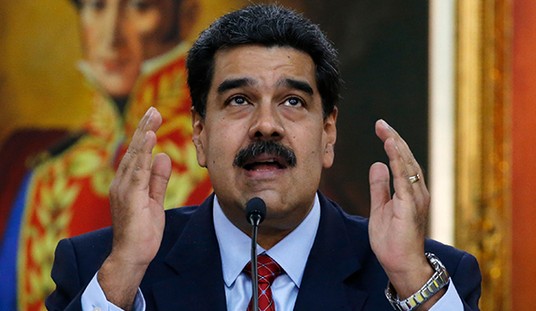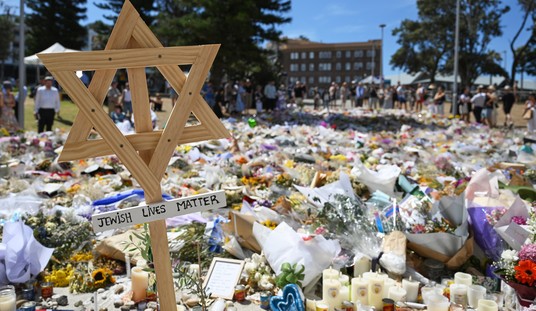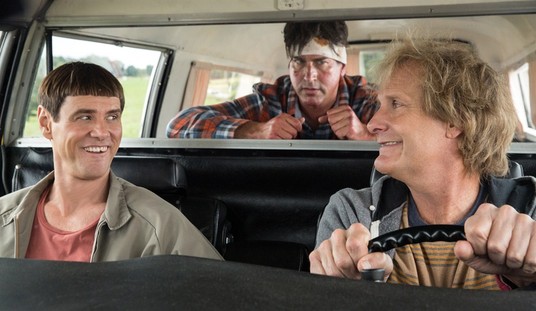Ayatollah Ali Khamenei is dying. That he's been dying for the last five years has actually been a running joke on the streets of Tehran, sort of like the old Saturday Night Live bits claiming that "Generalisimo Francisco Franco Is Still Dead."
Khamenei has had one foot in the grave so long that the overanxiousness of those who wish to replace him has already led to their disqualification, or worse. The old man is a survivor, but his hold on power is noticeably slipping.
Women have openly defied the wearing of the hijab, the "flag of the revolution," as Khomenei called it. Restless minorities, including the Kurds, Arabs, and Azeris, have taken to making hit-and-run attacks on regime targets. This low-level insurgency only adds to the growing sense that change is coming to Iran.
Khamenei is 86 years old and reportedly in ill health. Western intelligence believes he had prostate cancer in 2014 and, most recently, a severe bowel obstruction in 2022. In public, he has appeared to be weak and tired at times. Health rumors were flying after Khamenei didn't appear in public in the immediate aftermath of the U.S. attacks on Iran in June. It doesn't take much to get tongues wagging in Iran about the mental and physical state of their Supreme Leader.
Regardless of when he dies, sooner or later, the shape of a post-Khamenei Iran is of intense interest to the U.S. and the world.
The last two years have seen the breaking of Ayatollah Khamenei's power and the weakening of the regime he leads. The events that have transpired during the Gaza War will have an enormous bearing on what Iran will look like after Khamenei dies.
Over the past two years—since Hamas’s October 7, 2023, attack on Israel, which Khamenei alone among major world leaders openly endorsed—his life’s work has been reduced to ashes by Israel and the United States. His closest military and political proteges have been killed or assassinated. His regional proxies have been hobbled. His vast nuclear enterprise, built at staggering cost to Iran’s economy, has been buried under rubble.
The Islamic Republic has sought to turn its military humbling into an opportunity to rally the country around the flag, but the indignities of daily life are inescapable. Iran’s 92 million people make up the largest population in the world to have been isolated from the global financial and political system for decades. Iran’s economy is among the world’s most sanctioned. Its currency is among the world’s most devalued. Its passport is among the world’s most denied. Its Internet is among the world’s most censored. Its air is among the world’s most polluted.
Power outages, water shortages, 25% unemployment, the official inflation rate running at or above 20%, and the Iranian street, which played such a critical role in the 1979 revolution, is a powder keg waiting to explode. All these factors speak to a violent upheaval in the aftermath of Khamenei's death.
Karim Sadjadpour, senior fellow at the Carnegie Endowment for International Peace and noted Middle East analyst, says that one possible future for Iran would be a collapse into "the strongman cynicism that has been the hallmark of post-Soviet Russia." Another might be what happened to China after the death of Mao: a more pragmatic emphasis on the national interest rather than rigid ideology. There's also a chance that clerical rule might give way to a Pakistan-like hybrid with the military in ascendancy and Islamic fundamentalism taking a backseat to the protection of the regime.
Khamenei is most fearful of any political reform. He believes that the Gorbachev regime's attempts to humanize communism led directly to its collapse. In fact, it was far more complicated than that, but as Ronald Reagan pointed out in his famous speech to students at Moscow University, "a bird on a tether, no matter how long the rope, can always be pulled back." Khamenei didn't want to give the Iranian people any rope at all.
Sadjadpour writes, "when a totalizing ideology collapses, it often leaves behind not civic renewal but cynicism and nihilism." Post-Soviet Russia was marked less by the growth of democratic systems than by the pursuit of wealth at any cost. The corruption that already marks the Iranian regime will likely get worse.
About the only guarantee of a post-Khamenei regime is chaos. Iran has always been a factionalized country, going all the way back to the revolution, when the American hostages were used as status symbols and bargaining chips by various factions, making negotiations impossible. "Who's in charge?" was a familiar lament from President Carter's aides trying desperately to get the hostages released before the election.
The Iranian government has become better organized in the intervening years, but the factions are even more fractious. How that plays out in the aftermath of Khamenei's death will determine the direction of Iran's future domestic and foreign policy.



